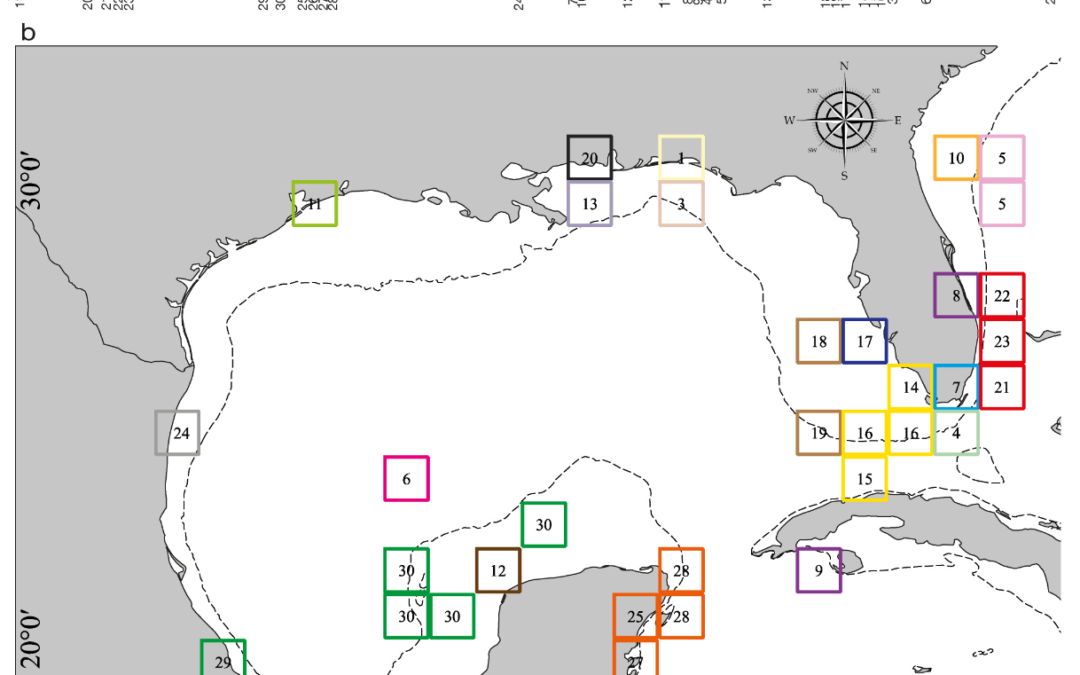Authors: José María Ahuatzin-Hernández, Juan J. Morrone & Víctor Manuel Vidal-Martínez.
doi: https://doi.org/10.3354/meps14407
Abstract: The biogeography of hydrozoans encompasses a broad scope of study that involves various challenges due to their diverse distributional strategies and life cycle characteristics. This work aims to study the biogeographic patterns of hydrozoans in the Gulf of Mexico. Occurrence records on hydrozoans were compiled through the Global Biodiversity Facility Information database and peer-reviewed literature. Biogeographic patterns were addressed through (1) the identification of biological assemblages, using hierarchical clustering with contiguity constraint; (2) the decomposition of beta diversity into species replacement, nestedness, and local contribution to beta diversity (LCBD); and (3) the identification of areas of endemism with a parsimony analysis of endemicity (PAE). The northern Gulf of Mexico and the Yucatán Peninsula contain a
large hydrozoan assemblage that splits into smaller groups at different levels, characterized by species replacement and high LCBD values. By contrast, the southern Gulf of Mexico contains a homogenous assemblage, which exhibits low LCBD values and contributes strongly to nestedness. PAE identified 19 areas of higher-level endemism, concentrated mainly in shelf zones of the Yucatán and Florida peninsulas. The distribution patterns of hydrozoans in the Gulf of Mexico may be shaped by the life cycle characteristics of the taxa and the geological history of the region, relating either to neritic or oceanic zones. The northern Gulf reflects a heterogeneous biological composition with a complex biogeographical history, which makes this area of particular interest for future studies, as it likely represents a transition zone. This premise must be corroborated in the future.
Keywords: Marine biogeography · Hydrozoa · Parsimony analysis of endemicity · Transition zone


Comentarios recientes